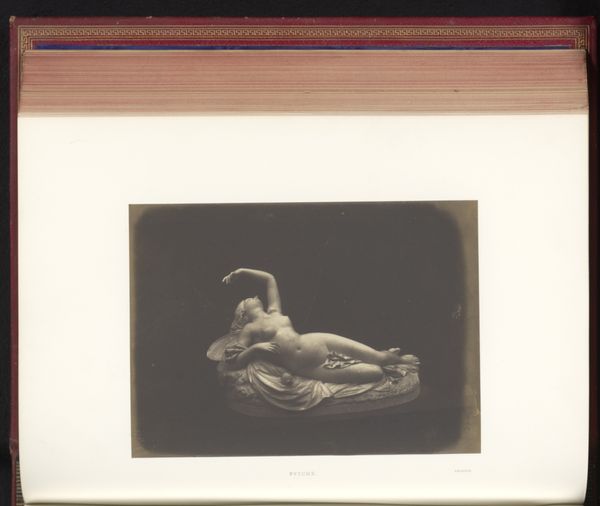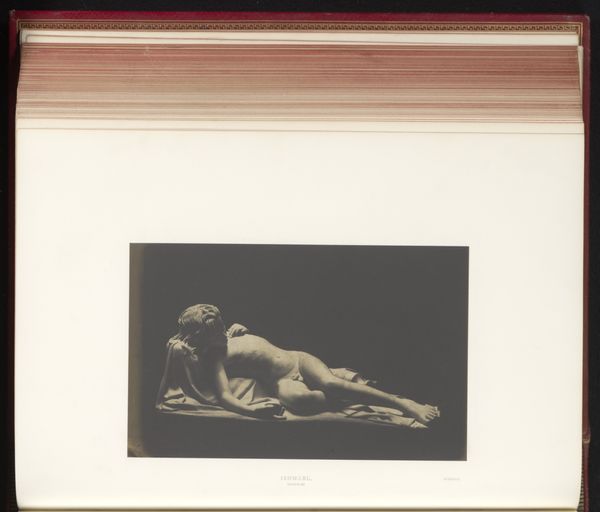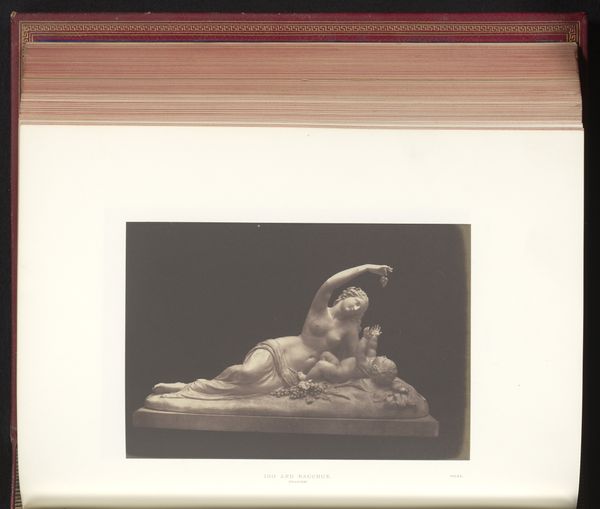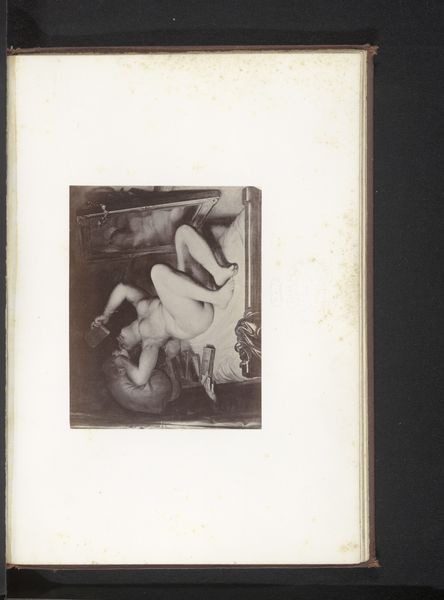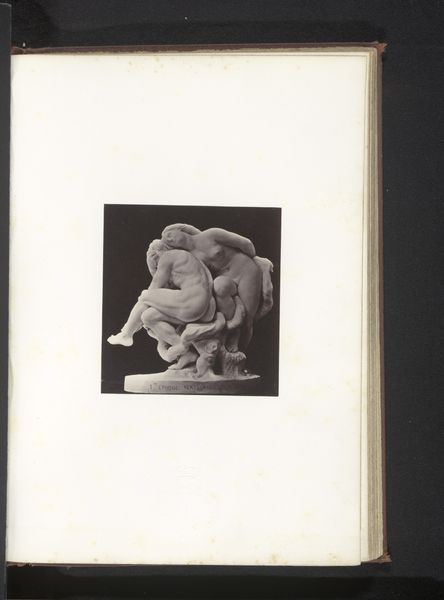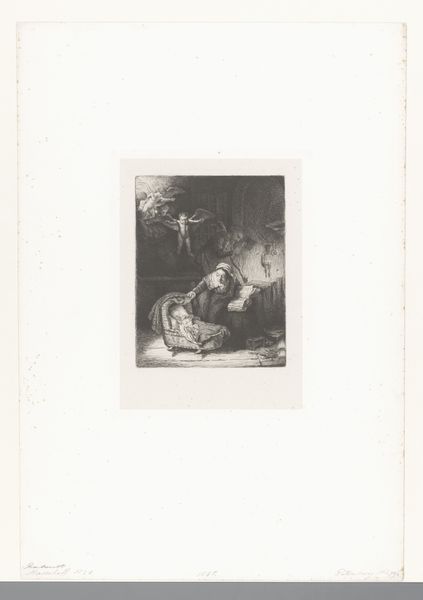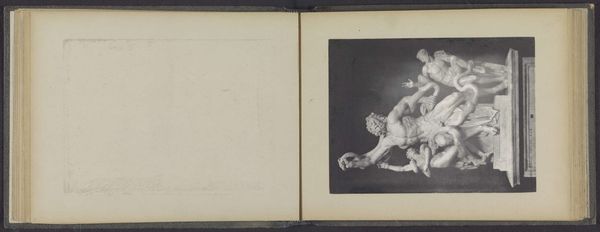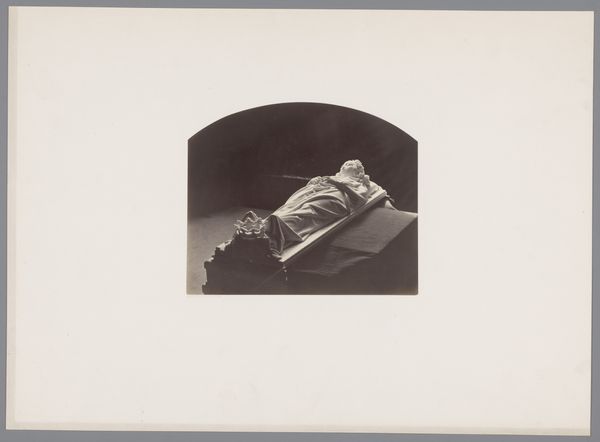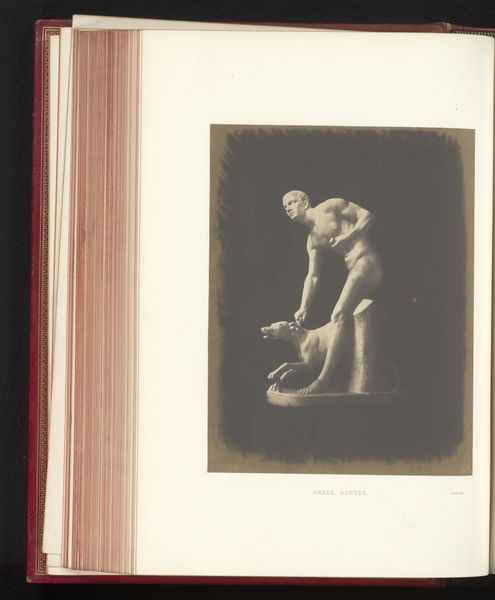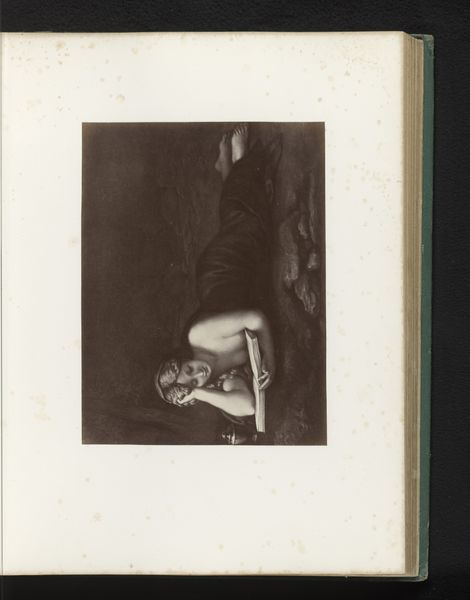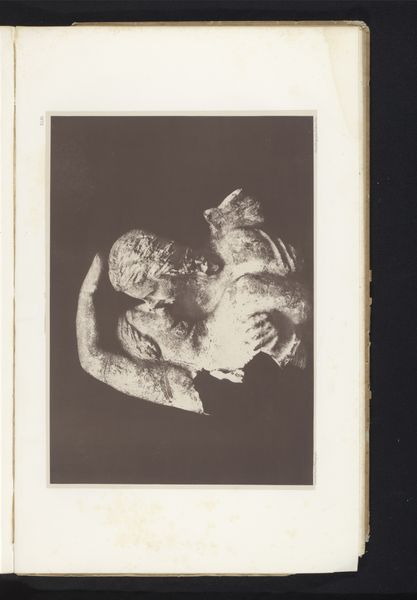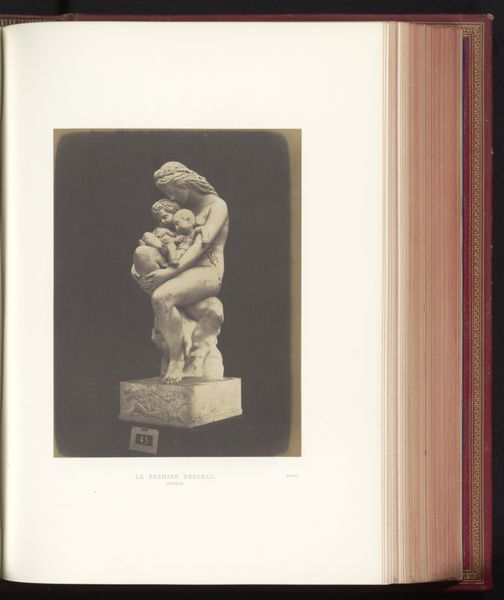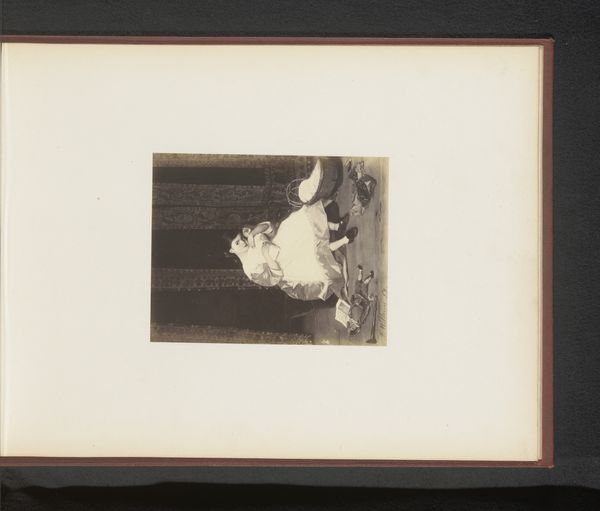
Sculptuur van een dronken faun door John Hogan, tentoongesteld op de Great Exhibition of the Works of Industry of All Nations van 1851 in Londen 1851
0:00
0:00
sculpture, marble
#
neoclacissism
#
sculpture
#
figuration
#
sculpture
#
marble
#
erotic-art
Dimensions: height 153 mm, width 199 mm
Copyright: Rijks Museum: Open Domain
Curator: Ah, yes, the “Sculpture of a Drunken Faun” by John Hogan. This marble sculpture, shown at the Great Exhibition in 1851, is a fascinating example of mid-19th century neoclassicism. Editor: It does have that somber neoclassical feel. But it is the sensuality that really strikes me first – the somewhat suggestive posture and almost excessive devotion to the imagery of drunkenness. The curve of the back and slack jaw are almost too expressive to come off as innocent merriment. Curator: I think you raise an important point about its inherent tensions. Notice how Hogan, as a devout Catholic artist from Ireland, uses classical forms to subtly examine, perhaps even critique, hedonism through the faun’s inebriated pose. The sculpture itself becomes a complex visual argument, a carefully balanced composition using diagonals to accentuate his drunken state. Editor: Absolutely. Placed at the time of the Exhibition, which coincided with a rising interest in classical themes mixed with nascent sexual liberalism, I wonder how audiences saw it. We have the trappings of the moral stories of ancient Greek mythological stories, of course – excess is its own punishment – but Hogan doesn’t fully deliver. There is pleasure, but pleasure on the verge of physical collapse, which I find very intriguing. I am not convinced we see a truly moralistic point here. Curator: A very valid take. However, the detail of the marble work should be commended; notice how he manipulates the light and shadow to model form to direct our gaze towards the faun’s face. He also adds to the narrative by way of those precisely-carved grapes, emblematic of over-indulgence. Through skillful craftsmanship and thoughtful arrangement, Hogan guides our perception and reinforces the cautionary themes of excess. Editor: Indeed, those classical cues are there, like little anchors – but something subversive creeps in here too, like pleasure turned into its grotesque double. By situating his piece between neo-classicism, moral arguments, and emerging cultural appetites for “low” pleasures like excessive drink and revelry, Hogan forces a complex, ambivalent social portrait on the viewer, no? Curator: That ambivalence might be what still makes it captivating. It leaves one questioning, reflecting, and re-evaluating the intersection of pleasure and consequences within shifting cultural values, even now. Editor: Well said! There is indeed something incredibly striking about seeing such a beautiful object depicting such an "ugly" scene.
Comments
No comments
Be the first to comment and join the conversation on the ultimate creative platform.
